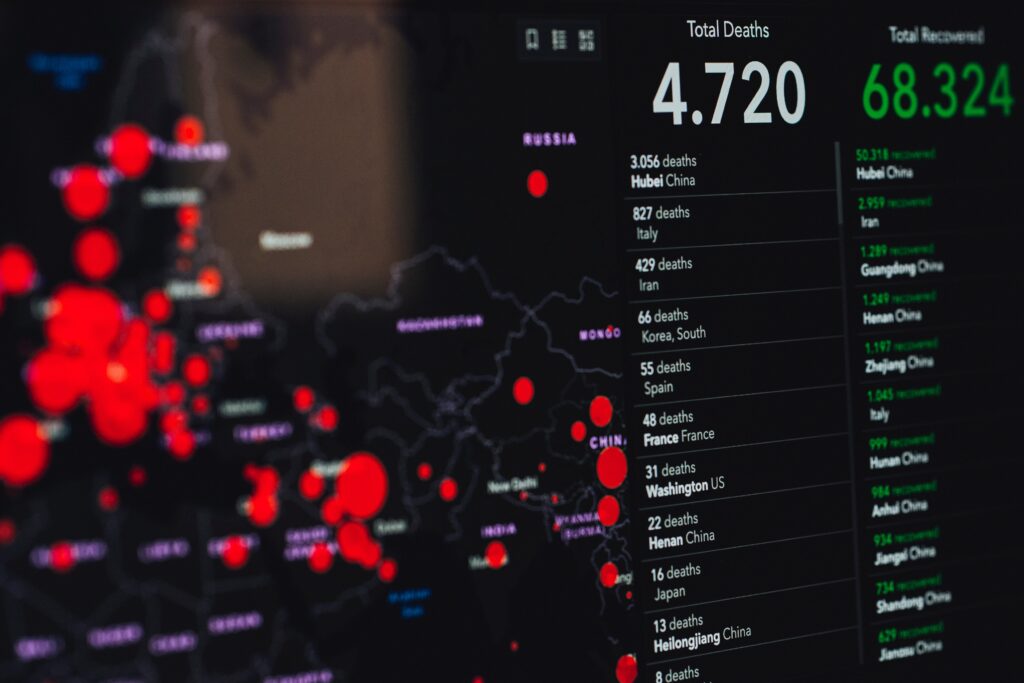The journey of COVID-19
With us now nearing our 3rd year living with this disease, it is crucial we look back on the diseases origin and how far we have come since its discovery.
Information is sourced from Gov.uk.
First discovery- December 31st, 2019- Wuhan City.
On the 31st of December, in 2019, the World Health Organisation was informed of clusters of Pneumonia cases of unknown causes in Wuhan City, Hubei Province, China. This was promptly named as a “novel coronavirus” after several samples of this disease were found and tested on January 9th, 2020.
Video sourced from South China Morning Post.
In February, 2020, the new virus was then formally named SARS-CoV-2, and the disease caused by it was named Covid-19.
The pandemic declaration- March 11th, 2020- WHO announcement.
WHO declared the Covid-19 disease a “global pandemic”, after reviewing its rapid spread among infected individuals and its severity as a disease.
Video sourced from Global News.
The scientific consensus is that Covid-19 is “zoonotic in origin”, but its original outbreak point is yet to be known.
Zoonotic means that the disease has infected humans from animals.
At this time it is believed that there was a host between the source and its introduction to infecting humans.
How was it transmitted?
Covid-19 is spread through droplets, such as spit or mucus from coughing, and through the air, as infected individuals breathe they are unknowingly spreading the disease in airborne moisture, hence the requirement for a mask in public.
There is also the possibility of “indirect transmission”, where individuals may have touched a surface that was recently held onto by an infected person.
Once infected, a viral load was noted to build up in the upper respiratory tract, and then in the lower respiratory tract later, making it easier to spread as it forced you to cough infected air and spit.
What is SARS-CoV-2?
SARS-CoV-2 is part of a large family of “coronaviruses”.
A coronavirus is a form of virus that causes illness to humans and animals.
This SARS-CoV-2 is genetically similar to SARS-CoV, which was responsible for the SARS outbreak of 2003.
How did Covid-19 mutate?
The original form of SARS-CoV-2 we knew in 2019 has drastically changed and mutated as we began to grow immune to the disease.
Each mutation had created a new variant of the disease, that was either more severe or easier to catch,
on the 31st of May, 2021, WHO recommended the new “naming system” of the variants, which consisted of the greek alphabet.
Vaccination beginning- 2nd of December, 2020, UK.
On the 2nd of December, in the UK, the first Vaccine for Covid-19 was approved for use by the Medicines and Healthcare products Regulatory Agency (MHRA).
Video sourced from Global News.
A later 3 vaccinations were added onto this list as time went on.
Although the vaccine was shown to have decreased infectivity rate and severity of the disease, people who were up-to-date on their vaccines still had the chance of getting the disease and spreading it.
Where are we now?
Covid-19 still infects over 12,000 people every week in the UK, with 568 people dying each week with the disease.
Nearly 145 million vaccinations (including 2nd and 3rd booster shots) have been given out total in the UK.
With 45.5 million people being given their first dosage of the vaccine.
As of Friday the 21st of April, 2023, the latest variant is the Arcturus variant, and it has reached 29 countries so far, including the UK.
Featured image:
Photo by Markus Spiske: https://www.pexels.com/photo/coronavirus-statistics-on-screen-3970330/
